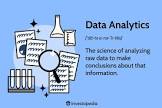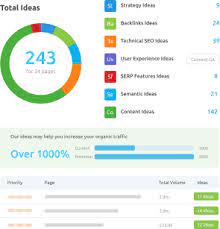The Importance of Data Collection and Analysis
In today’s digital age, data has become a valuable asset for businesses across all industries. The collection and analysis of data play a crucial role in decision-making, strategy development, and overall business growth.
Data Collection
Data collection involves gathering information from various sources, such as customer interactions, sales transactions, website visits, social media engagement, and more. This raw data is the foundation for understanding trends, patterns, and insights that can drive business success.
Effective data collection methods ensure that businesses have access to accurate and relevant information. This process may involve the use of surveys, interviews, sensors, tracking tools, or other technologies to capture data in real-time.
Data Analysis
Once data is collected, the next step is analysis. Data analysis involves examining the information to uncover meaningful insights that can inform strategic decisions. Through statistical techniques, machine learning algorithms, and visualisation tools, businesses can identify trends, correlations, outliers, and opportunities hidden within the data.
By analysing data effectively, businesses can gain a deeper understanding of their operations, customer behaviour, market trends, and competitive landscape. This insight enables informed decision-making that drives efficiency, innovation, and competitive advantage.
The Benefits of Data Collection and Analysis
There are numerous benefits to prioritising data collection and analysis in business:
- Improved Decision-Making: Data-driven decisions are based on evidence rather than intuition or guesswork.
- Enhanced Customer Insights: Understanding customer preferences leads to better products/services and increased customer satisfaction.
- Increased Efficiency: Identifying inefficiencies through data analysis allows for process optimisation and resource allocation.
- Competitive Advantage: Leveraging data for strategic planning helps businesses stay ahead of competitors in a fast-paced market.
- Better Risk Management: Anticipating risks and opportunities through data analysis enables proactive risk mitigation strategies.
In Conclusion
Data collection and analysis are essential components of modern business operations. By harnessing the power of data to drive insights and actions, businesses can unlock new opportunities for growth and success in an increasingly competitive landscape.
Top 5 Essential Tips for Effective Data Collection and Analysis
- Clearly define your research questions and objectives before starting data collection.
- Ensure that the data collected is accurate, relevant, and reliable.
- Use appropriate tools and methods for data collection to ensure consistency and validity.
- Organise and store your data effectively to facilitate easy analysis and interpretation.
- Utilise visualisation techniques to present your findings in a clear and understandable manner.
Clearly define your research questions and objectives before starting data collection.
It is crucial to clearly define your research questions and objectives before embarking on data collection and analysis. By establishing clear goals at the outset, you can ensure that the data you collect is relevant and aligned with your research objectives. This focused approach not only streamlines the data collection process but also enhances the quality of your analysis, enabling you to derive meaningful insights that directly contribute to achieving your research goals.
Ensure that the data collected is accurate, relevant, and reliable.
It is crucial to ensure that the data collected for analysis is accurate, relevant, and reliable. Accuracy in data collection ensures that the information reflects the true state of affairs, leading to valid insights and informed decision-making. Relevance ensures that the data aligns with the objectives of the analysis, providing meaningful insights that drive strategic actions. Reliability guarantees consistency and trustworthiness in the data, enabling businesses to make confident decisions based on a solid foundation of information. Prioritising accuracy, relevance, and reliability in data collection is key to unlocking the full potential of insights for business growth and success.
Use appropriate tools and methods for data collection to ensure consistency and validity.
To ensure the consistency and validity of data collection and analysis, it is essential to utilise appropriate tools and methods. By selecting the right tools for data collection, such as surveys, sensors, or tracking software, businesses can gather accurate and reliable information. Employing consistent methods throughout the process helps maintain data integrity and ensures that the insights derived from analysis are trustworthy. Choosing the right tools and methods for data collection is key to making informed decisions and driving business success based on reliable information.
Organise and store your data effectively to facilitate easy analysis and interpretation.
To ensure efficient data analysis and interpretation, it is essential to organise and store your data effectively. By structuring your data in a logical manner and implementing a robust storage system, you can streamline the analysis process and uncover valuable insights more easily. Properly organised data allows for quick retrieval, comparison, and manipulation, enabling you to make informed decisions based on accurate information. Investing time in setting up an efficient data organisation and storage strategy can significantly enhance the effectiveness of your data analysis efforts.
Utilise visualisation techniques to present your findings in a clear and understandable manner.
Utilising visualisation techniques is a valuable tip when it comes to data collection and analysis. By presenting your findings in a clear and understandable manner through charts, graphs, infographics, and other visual aids, you can effectively communicate complex data insights to stakeholders. Visual representations not only enhance comprehension but also make it easier to identify trends, patterns, and outliers within the data. This approach not only improves decision-making processes but also facilitates better communication and engagement with key audiences.






